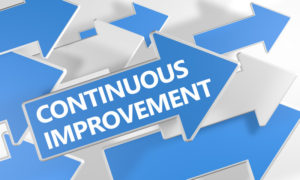As I caught up on my industry reading this past weekend, I saw several implementation best practices articles – advice from experts on EHR, Telehealth, Pop Health, and Medical Device implementations. These kinds of resources are always helpful to think beyond your organization’s experience, get a different perspective, and learn from others.
These kinds of resources are always helpful to think beyond your organization’s experience, get a different perspective, and learn from others.
At the same time, conducting lessons learned sessions internally after major projects is critical. While it’s still fresh in your mind, being able to look as a team at what worked well and what didn’t work well over the life of the project is an important step before moving on to the next project or next phase of a multi-year project. This should be done in the spirit of continuous improvement. Ask yourself, what can be learned from this project that can be applied to future projects. And be sure to document that in a way that is referenceable in the future.
We are just over 3 weeks post go live for Wave 1 of our Epic project at the University of Vermont Health Network (UVMHN). We start a series of lessons learned/debrief sessions this week. IT managers have been asked to think about three questions and submit them in advance so they can be compiled for review and discussion:
- What worked well?
- What didn’t work well that we should modify?
- What didn’t work well (or was unnecessary and we should no longer do)?
As we planned for the sessions, I suggested that we have a few guidelines – no blame, assume positive intent, and ensure everyone is heard. UVMHN has a very collaborative and team-oriented culture so that shouldn’t be difficult.
Often, it’s easy to go right to what didn’t work well. Those examples may be top of mind. But there is so much in a project of this magnitude that is done well. Capturing those points and making sure you repeat them in the future is important.
Wave 2 planning started before the Wave 1 go live. Certain lessons have already been looked at as part of that planning. But the upcoming sessions will be an opportunity to look more broadly and get the input of all areas involved. Given I’ve been interim CTO since late May, my involvement did not span the entire project but rather certain aspects in the last few months including the go live. I look forward to hearing everyone’s perspective on how we can do better and build on the successes to date.
Related posts:
10 Go Live Command Center lessons from the field
Epic Go Live – report from the field
9 Tips for Go Live support success
Plans, processes, people: lessons from a successful EHR implementation

Beth H on said:
Thank you for the bringing up an important topic that often gets overlooked. Many projects begin with the intent to capture lessons learned, but aren’t always successful. As you mentioned, it must be “documented in a way that is referenceable” and I think that’s where a lot of these efforts fall short. What strategies/tools have you used to accomplish this?
Sue Schade on said:
Beth, great question! No secret sauce on making lessons learned referenceable documentation but it should at a minimum be made available through your PMO and core project management documents wherever they are stored in your organization.
Guy Cooper on said:
Great article Sue, its a good reminder to always look for ways to incorporate continuous improvement in your organisation. In the article you state ‘And be sure to document that in a way that is referenceable in the future.’ Have you got an specific ideas on how you can document these ideas to be referenceable. We conduct the ‘lessons learned’ meetings at the end of projects but upon reflection, we don’t have any good way to document this information. Any advice would be appreciated!
Sue Schade on said:
Guy, we have many different group sessions on lessons learned and created long documents with all the input. That was reviewed by project leadership and distilled down into key changes for the next wave. Those key changes have been highlighted in multiple presentations for all to see. Hope that helps!